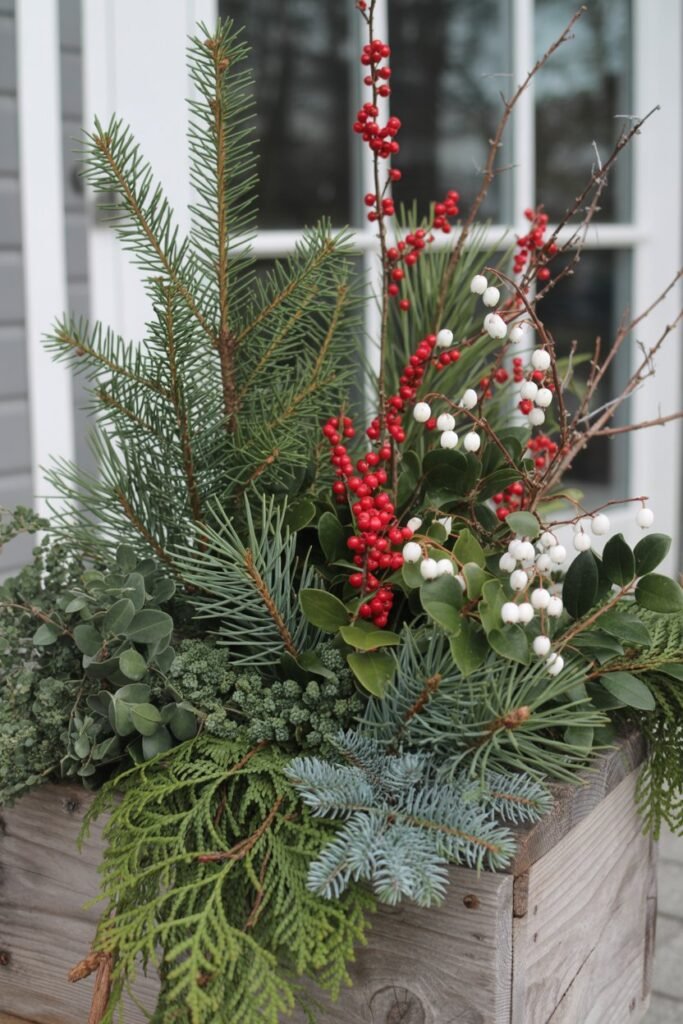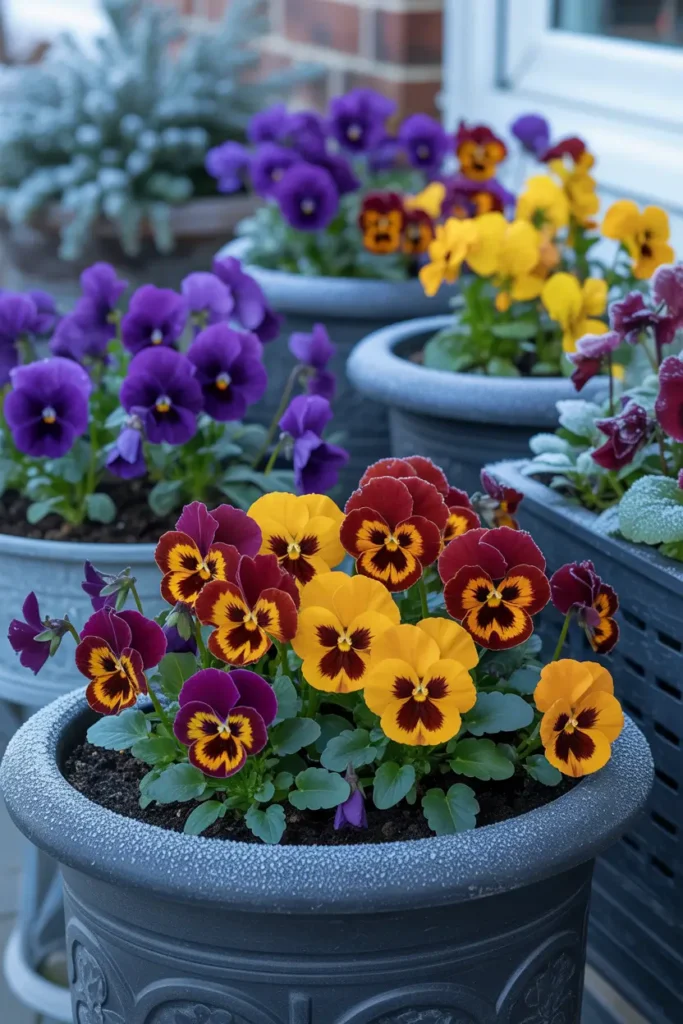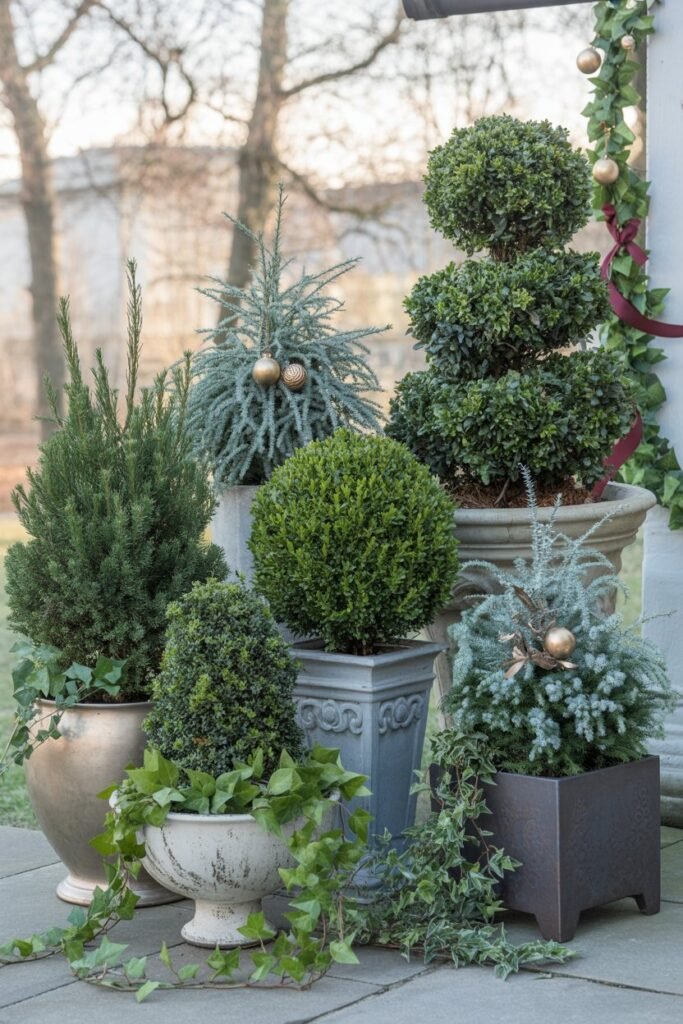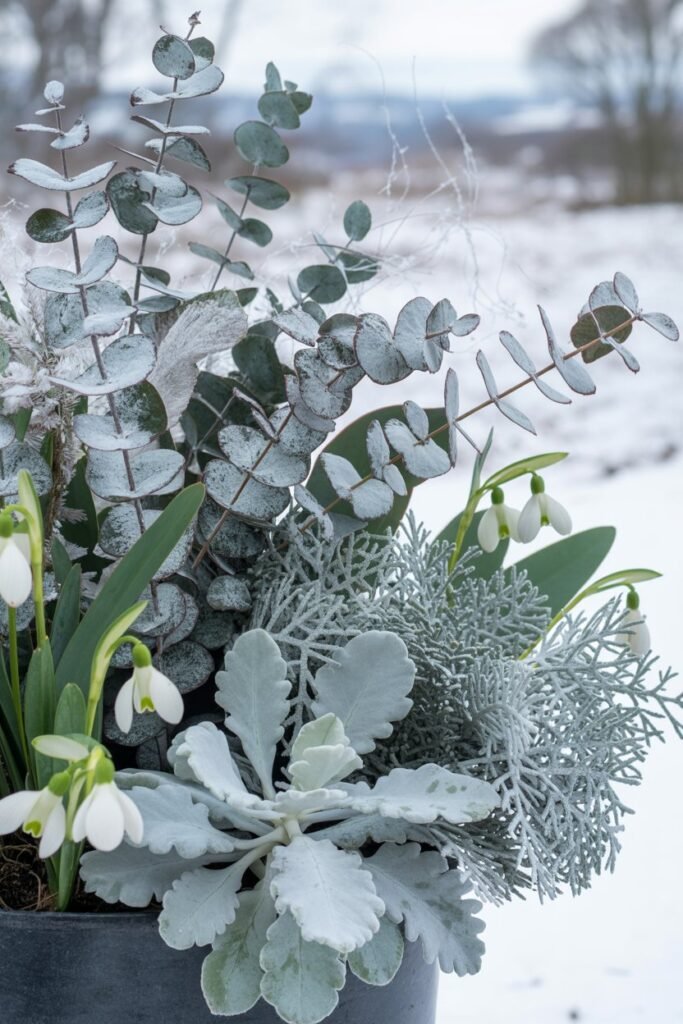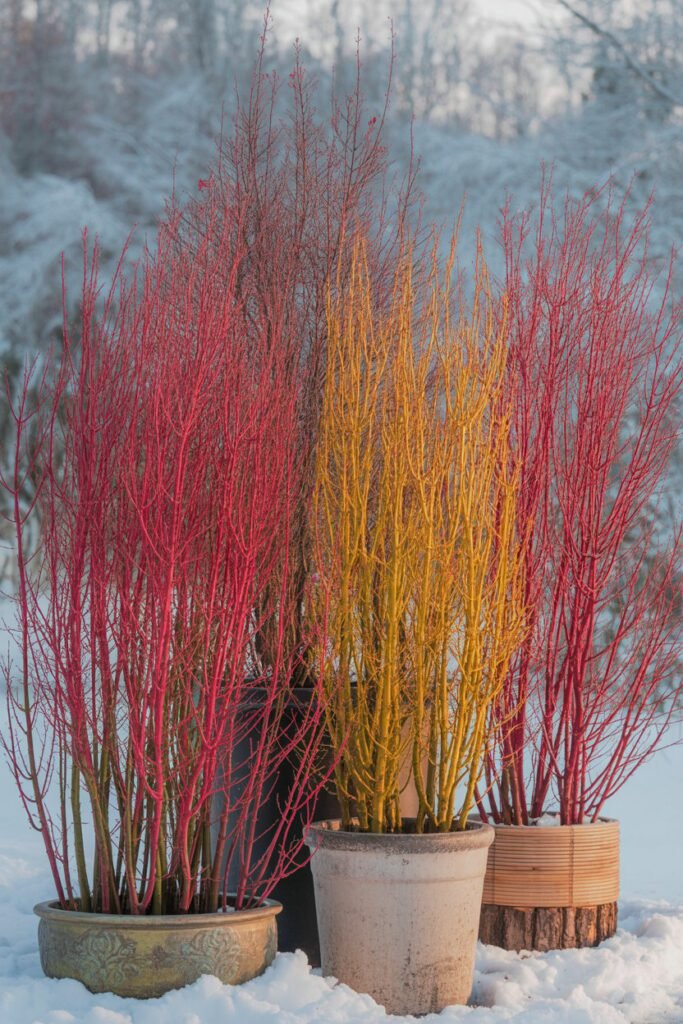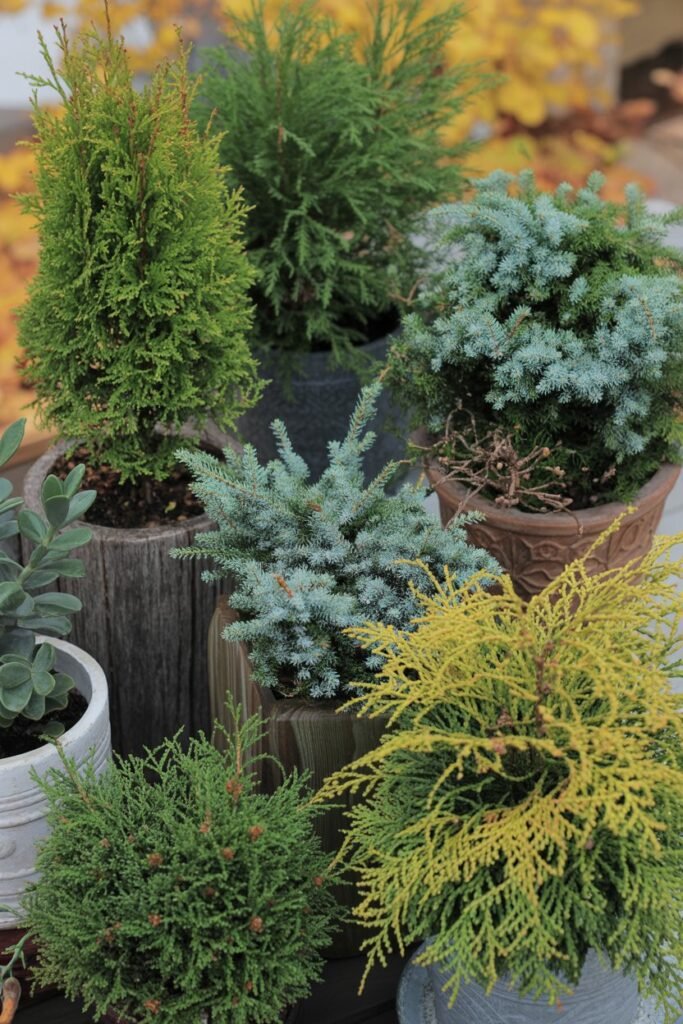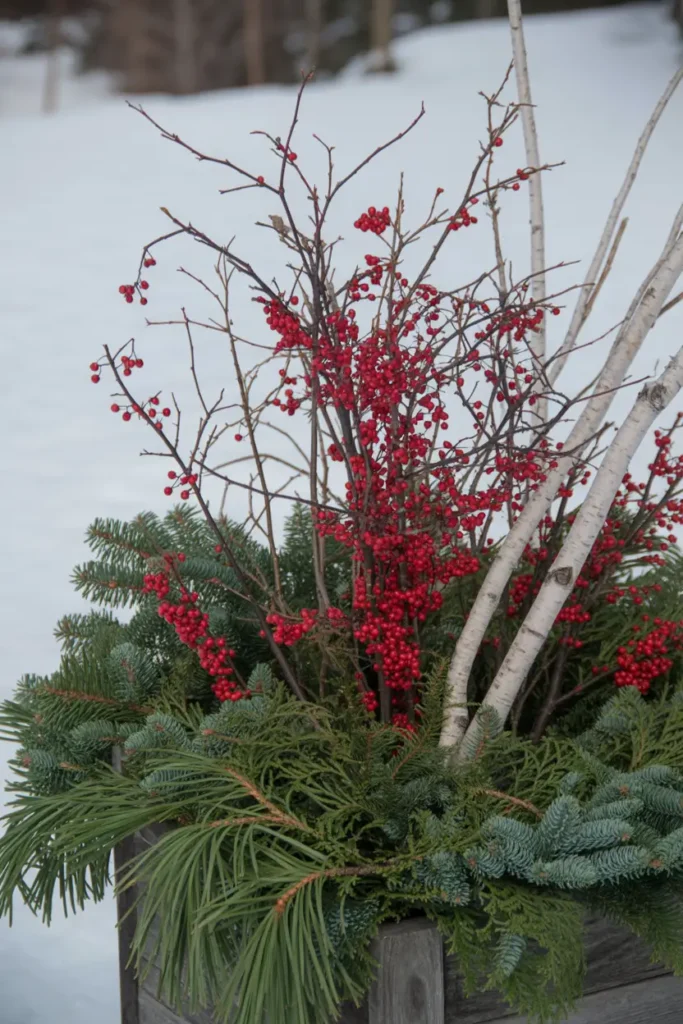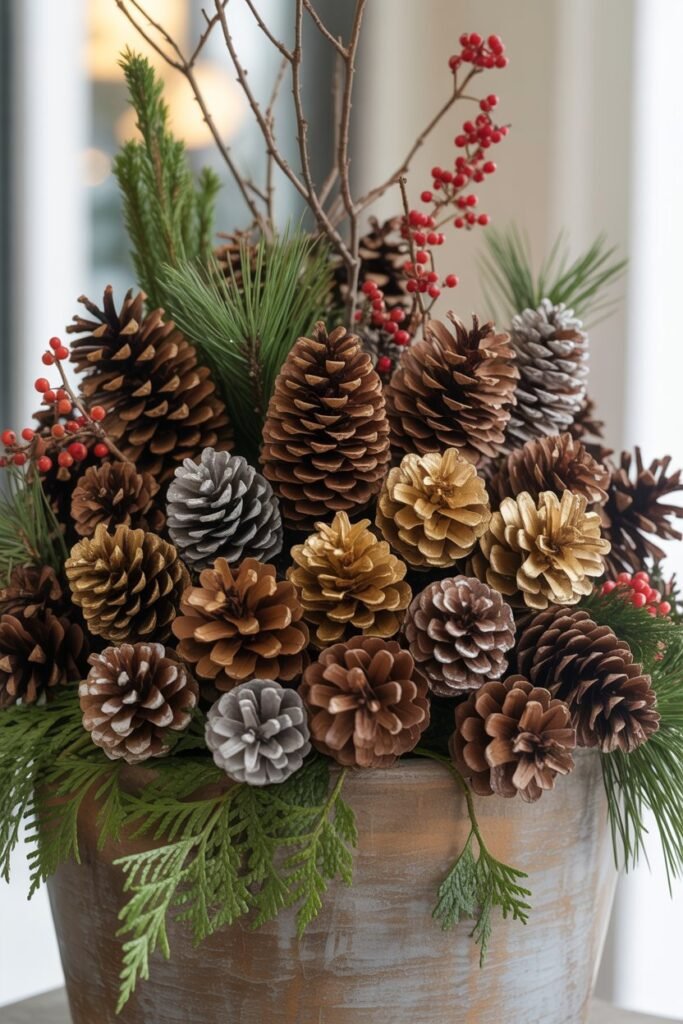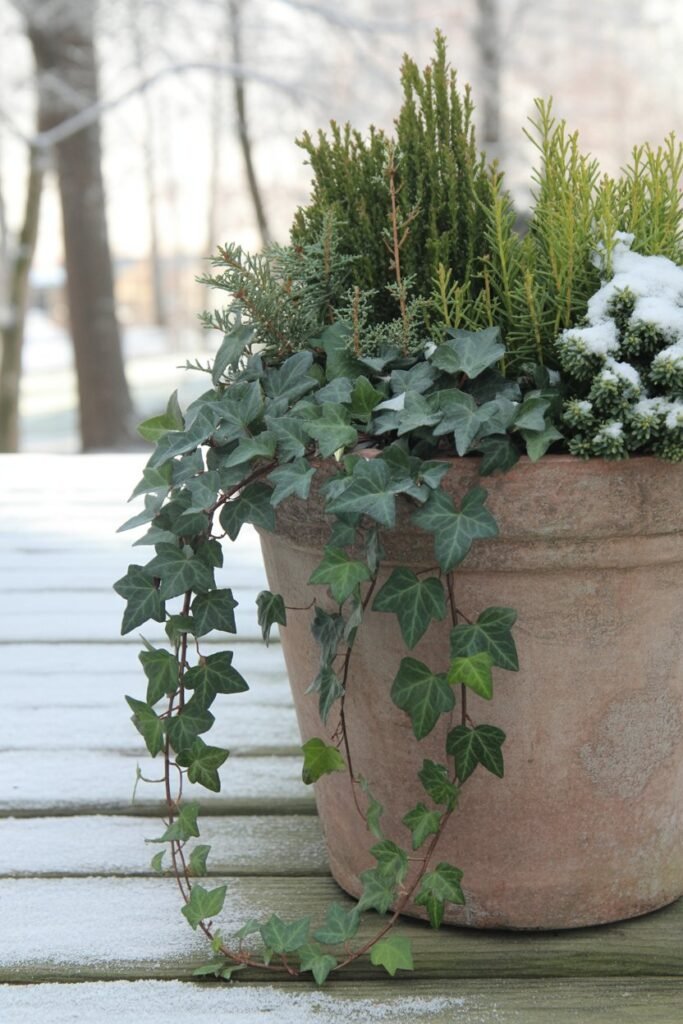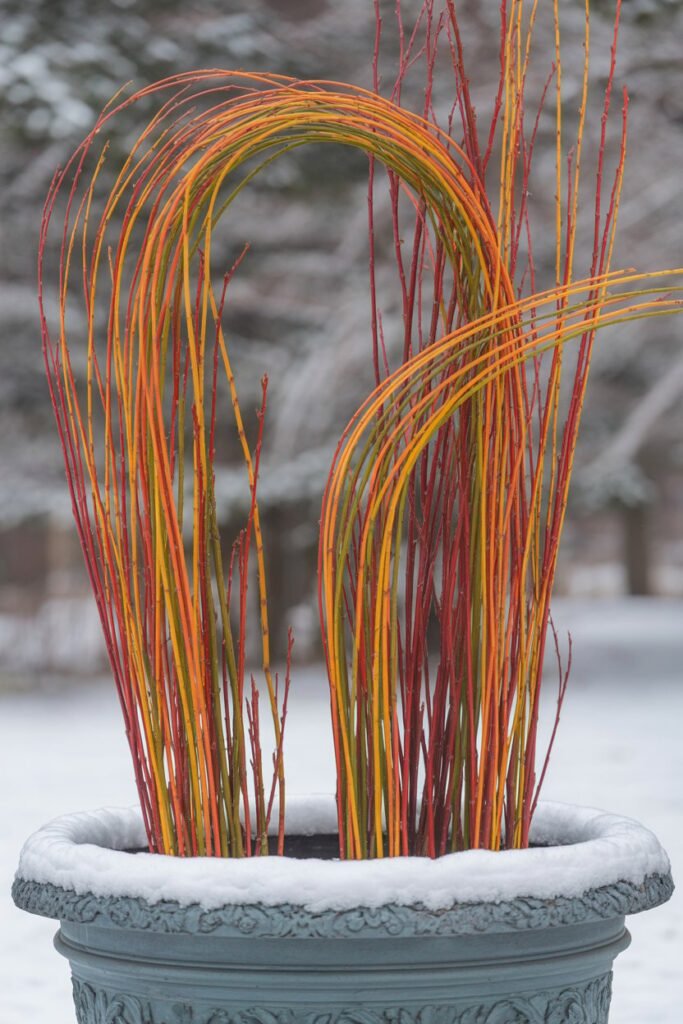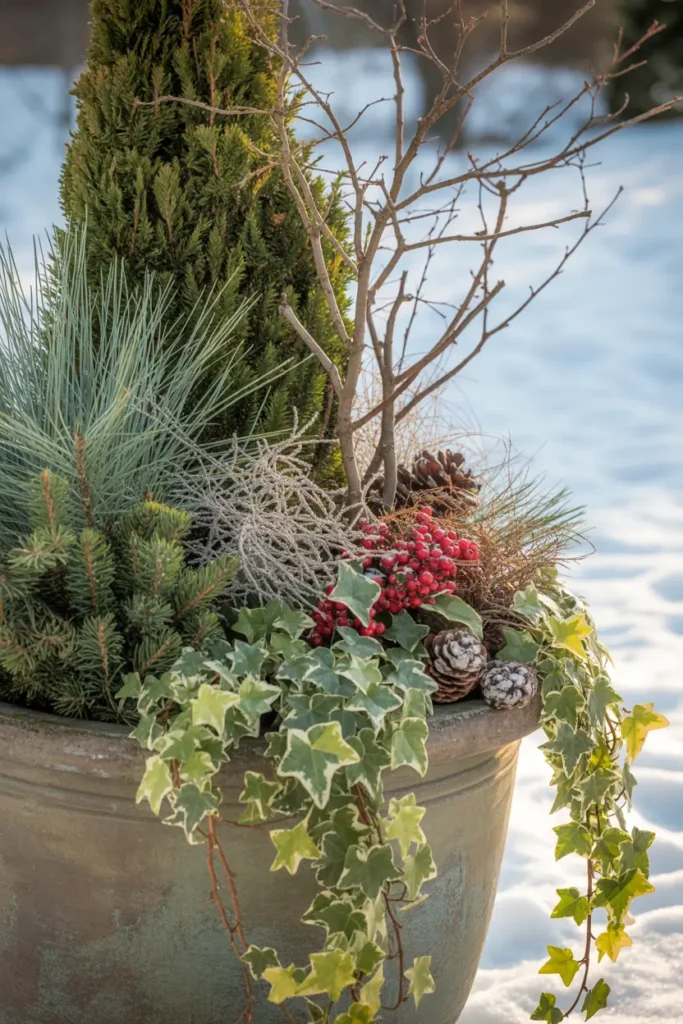15 Fall and Winter Planter Ideas to Brighten Your Seasonal Garden
When the temperatures drop and summer blooms fade, I don’t let my planters sit empty. Fall and winter offer incredible opportunities to create stunning displays that bring life and color to porches, patios, and gardens during the cooler months.
I’ve discovered that seasonal planters can be just as beautiful as their spring and summer counterparts. With the right combination of hardy plants, evergreens, and decorative elements, I can transform outdoor spaces into welcoming displays that withstand frost and even snow.
In this guide, I’ll share 15 creative planter ideas that have worked beautifully for me throughout fall and winter. Whether you’re looking for low-maintenance options or statement pieces, these ideas will help you keep your outdoor spaces vibrant all season long.
1. Classic Evergreen and Berry Combination
I start with a base of evergreen branches—pine, spruce, or fir work perfectly. Then I add branches with colorful berries like winterberry holly or snowberry for pops of red or white.
This traditional combination requires minimal maintenance. I simply arrange the evergreen branches to create height and fullness, then tuck berry branches throughout.
The best part is that these materials stay fresh-looking for months in cold weather. I’ve had arrangements last from November through February without replacement.
2. Ornamental Cabbage and Kale Display
Ornamental cabbage and kale have become my go-to plants for fall planters. These hardy vegetables thrive in cool weather and actually become more vibrant after light frosts.
I plant them in layers, using different colors—deep purple, pink, and white varieties create stunning contrast. They can withstand temperatures down to 20°F and continue looking beautiful.
For added interest, I combine them with trailing ivy or dusty miller around the edges. This creates a full, lush appearance that lasts well into winter.
3. Birch Branch Winter Wonderland
I love using birch branches to create height and architectural interest in winter planters. Their distinctive white bark stands out beautifully against darker backgrounds and adds a woodland feel.
I arrange several branches vertically in the planter, then fill the base with evergreens or winter pansies. Sometimes I wrap battery-operated string lights around the branches for evening ambiance.
This design works especially well for large planters flanking entryways. The vertical elements draw the eye upward and make spaces feel more grand.
4. Hardy Pansy and Viola Planters
I was surprised to learn that pansies and violas can survive freezing temperatures. These cheerful flowers continue blooming throughout fall and often reappear in early spring.
I plant them densely in planters for maximum color impact. They come in rich autumn colors like deep purple, burgundy, and golden yellow that complement the season perfectly.
The key is choosing winter-hardy varieties specifically bred for cold tolerance. I’ve had success with pansies that survive temperatures as low as 10°F.
5. Rustic Wheat and Dried Grass Arrangement
For a natural, harvest-inspired look, I fill planters with dried wheat stalks, ornamental grasses, and seed heads. This approach celebrates the beauty of the dormant season.
I gather materials from my garden or local farms—dried hydrangeas, ornamental corn stalks, and fountain grass all work beautifully. The texture and movement these elements provide is unmatched.
These arrangements require zero watering and look intentionally rustic as they weather throughout the season. They’re perfect for busy schedules.
6. Evergreen Topiary Statement Pieces
I create focal points with small evergreen topiaries planted in decorative containers. Boxwood, juniper, and dwarf Alberta spruce maintain their shape beautifully through winter.
I often add a collar of trailing ivy or creeping jenny around the base for softness. During holidays, I decorate them with small ornaments or ribbon.
These living planters are investments that return year after year. I simply move them to sheltered spots during extreme cold and they thrive indefinitely.
7. Frosted Eucalyptus and Silver Foliage
I’ve fallen in love with the silvery tones of preserved eucalyptus and dusty miller for winter planters. These cool colors complement snowy landscapes and create an elegant, sophisticated look.
I combine silver foliage with white flowers like hellebores or snowdrops when available. The monochromatic palette feels fresh and modern rather than traditional.
Preserved eucalyptus lasts for months without water. I use it as filler around living plants or create completely dried arrangements that require zero maintenance.
8. Colorful Twig Dogwood Display
Red and yellow twig dogwoods provide brilliant color in winter gardens. I cut branches and arrange them in planters for instant impact that brightens even the grayest days.
The stems maintain their vibrant color throughout winter. I combine red and yellow varieties for maximum visual interest, creating arrangements that stand out against snow.
This is one of my favorite sustainable options—I prune dogwood shrubs in late fall, using the cuttings in planters before adding them to compost in spring.
9. Miniature Conifer Collection
I plant dwarf conifers in various shapes and textures together to create living sculptures. Varieties like dwarf hinoki cypress, blue star juniper, and golden thread cypress offer incredible diversity.
These miniature evergreens stay compact and maintain interest year-round. I arrange them by height and color, creating compositions that look professionally designed.
After winter, I transplant them into the garden where they become permanent landscape features. It’s a practical way to invest in plants that serve multiple purposes.
10. Winterberry Branch Arrangements
Winterberry’s bright red berries on bare branches create dramatic winter displays. I cut branches from established shrubs and arrange them in planters filled with evergreen boughs.
The berries persist through winter, providing food for birds while adding color to my outdoor spaces. I watch cardinals and other songbirds visit regularly.
I combine winterberry with white birch branches for a classic color combination that photographs beautifully. This pairing captures the essence of winter perfectly.
11. Hellebore and Fern Winter Garden
Hellebores, also called Christmas roses, bloom in late winter and are remarkably cold-hardy. I plant them with evergreen ferns to create lush, woodland-inspired planters.
These shade-loving plants thrive in protected areas like covered porches. Their nodding flowers come in colors ranging from white to deep burgundy and even green.
I add a layer of mulch around the plants to protect roots during extreme cold. This simple step ensures they return year after year with increasing beauty.
12. Pine Cone and Natural Element Design
I fill planters with layers of pine cones in various sizes, creating texture and a natural aesthetic. This simple approach requires no plant care while looking intentionally designed.
I add sprigs of evergreen, berries, or decorative branches tucked among the pine cones. Sometimes I spray-paint a few cones gold or silver for a festive touch.
This design is perfect for high-traffic areas where live plants might get damaged. The pine cones protect the soil and provide visual interest without any maintenance.
13. Trailing Ivy and Evergreen Combination
I use hardy English ivy as a trailing element in nearly all my winter planters. Its cascading habit softens container edges and adds graceful movement.
I pair ivy with upright evergreens like small spruce or juniper for contrast in form. The combination creates full, professional-looking arrangements that stay green all winter.
Ivy is remarkably cold-tolerant and actually looks better in cool weather. I’ve had the same ivy plants return to planters for five consecutive winters.
14. Colorful Stem Willow Sculpture
I’ve experimented with colorful willow stems—varieties with orange, red, or yellow bark—arranged artistically in large planters. Their flexibility allows me to create curved, sculptural forms.
I bend and weave the stems to create contemporary designs that look like living art. Against winter’s muted landscape, these bold colors make powerful statements.
As temperatures warm in spring, some stems may root and begin growing. I either remove them or transplant them, enjoying their dual purpose.
15. Layered Texture Winter Container
My favorite approach combines multiple textures in a single planter. I start with a tall evergreen as the thriller, add ornamental grasses or branches as filler, and finish with trailing ivy as spiller.
This classic design formula works beautifully for seasonal planters. I vary the specific plants based on container size and location, but the structure remains consistent.
I refresh these planters midway through winter by adding berry branches or decorative elements. This keeps them looking fresh from November through March.
Conclusion
Ready to create your own stunning fall and winter planters? Start by selecting one or two ideas that match your style and outdoor space. I recommend beginning with low-maintenance options like evergreen combinations or dried arrangements if you’re new to seasonal containers.
Visit your local garden center to explore cold-hardy plants and decorative elements available in your area. Don’t be afraid to experiment—some of my best planter designs have come from trying unexpected combinations. Your outdoor spaces deserve to look beautiful all year long, and these seasonal planters will ensure they do.

